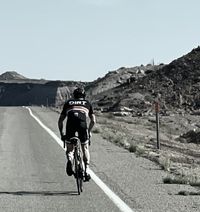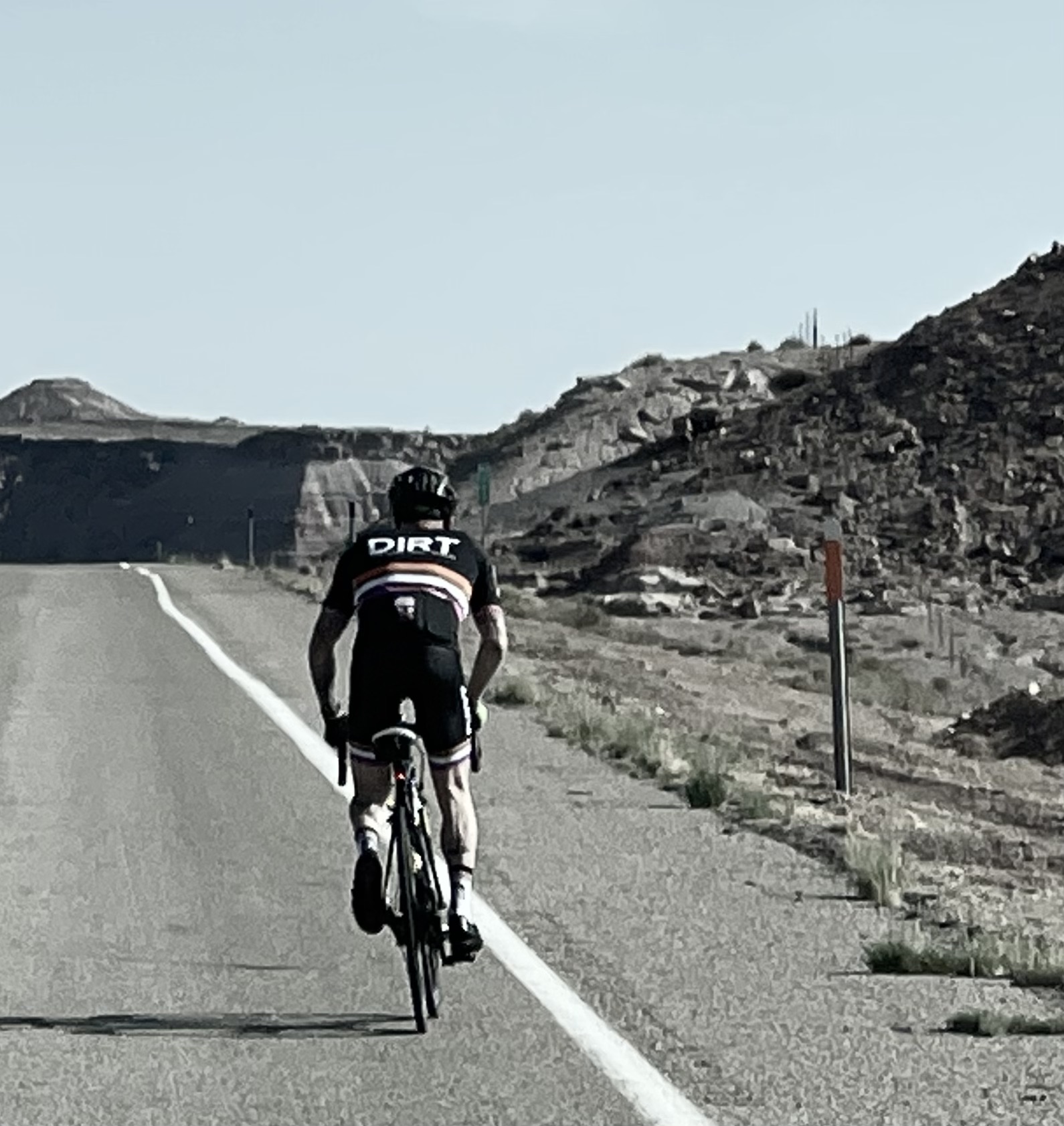Why introducing handcycles is Zwift’s most important update so far
Disabled athlete representation added to the virtual platform should be the first innovation on a journey towards much greater inclusivity


Last month Zwift rolled out a raft of new features. There are now training plans featuring route-based workouts, more course offerings, improvements to the home screen user interface, greater club functionality, expansion of the Pace Partners program, and the ability to compete against a holographic ghost of your previous personal best.
“We’re continually looking at new ways to make Zwift more accessible, easier to use, and more fun,” Zwift Vice President of Content, Mark Cote, said.
But perhaps the most socially profound enhancement made by Zwift came shortly after the September 1 announcement.
When Zwift announced it was taking the first step toward the representation and inclusion of adaptive and disabled athletes through the introduction of a handcycle on September 14, it marked the culmination of years of behind-the-scenes work by the community to raise awareness and promote the grassroots effort.
"The Challenged Athletes Foundation helped us connect with their network of athletes who use adaptive sports equipment, including handcycles. With input from these athletes, we were able to create a handcycle that looks similar to what athletes ride in the real world," notes Zwift's Andrew Bernstein.
The Zwift handcycle is an in-game adaptive bike powered by the rider's arms while in a recumbent position. The handcycle aerodynamically performs similarly to the Zwift time trial bike, receiving the full simulated draft benefit from other handcycles and 50% from upright bikes. Only handcycles can draft other handcycles.

Handcycles on virtual cycling platforms are nothing new. In 2020, RGT innovated the handcycle in collaboration with US military veterans’ organization Project Echelon Racing and hosted the first event dedicated to handcyclists in 2021. Three hundred adaptive athletes competed across the 12-race season.
The latest race content, interviews, features, reviews and expert buying guides, direct to your inbox!
Zwift doesn't have plans for a handcycle league, according to Bernstein, who said: "In the future, the new Handcycling Club will create further events and races in the game." Enhanced club functionality was among Zwift's recent improvements, putting organization and promotion in the hands of the community.
Taking it to the next level
Project Echelon and Wahoo RGT took the handcycle's realism to the next level, states Echelon’s co-founder and director Eric Hill.
"We worked with Olympic athletes from USA Paracycling to obtain wind tunnel testing data from a controlled setting and Notio data from an on-road environment, which considers a multitude of variables and used that data to extrapolate the physics of an in-game avatar. Similar to how we have helped advance corner speeds, race lines, and braking dynamics, we have used in-real-life Strava files and .fit files to create the most true-to-life physics possible on the platform."
Zwift's adaptive athlete community welcomed the giant leap toward adaptive-athlete representation and inclusion. "The impact is enormous and will have a wide range of implications," asserts disabled cyclist Andy Shuttleworth, "including not only an improved experience of Zwift but improved mental health, a sense of inclusion, and a simple way to identify with others in-game. It will encourage participation by more adaptive riders, which will benefit all of us.”

While the handcycle has received overwhelming approval by the adaptive-athlete community, some members feel Zwift didn't go far enough. One issue is how to deal with able-legged riders on leg-powered, upright bikes who choose to use the handcycle in the game.
Ken Talbot is a paracyclist who currently owns the record as the fastest handcyclist - In 2018 he broke the men's land speed record and became the first hand cyclist to go over 50mph in history with a time of 51.86mph. He explains: "A hand cyclist’s power is severely limited. When a [in real life] leg rider gets on the handcycle in Zwift, they gain a massive advantage ... the performance differences in the handcycle [for instance, its strong aerodynamics] will compound with the leg power output to net significant performance gains."
Zwift says “Handcycles are available to all, but they’re intended for Zwifters using handcycles on their trainers. Thanks in advance for keeping that in mind.”
And from Zwift Insider: "Here’s how we see it: if you want to test the handcycle (powered by your legs) in a casual ride or two, that’s no big deal. But on an ongoing basis, and certainly in competitive events (hard group rides, races), leg riders should stay off the Zwift Handcycle. It’s just the right thing to do."
Recumbent and upright trikes are coming
However, there is a solution that doesn't simply rely on able-bodied riders doing the right thing, and it's twofold, says Echelon's Hill. "Project Echelon is thrilled to be continuing its partnership with the Paralyzed Veterans of America and working in collaboration with Wahoo RGT and USA Paracycling. Together, we look forward to bringing further representation to the adaptive community by adding recumbent and upright trikes to the platform, bringing us closer to providing virtual riding and racing experiences that offer representation to the whole community."
At this time, Zwift's Bernstein has no plans for additional adaptive vehicles, like a trike. "There is presently no way for Zwift to know what vehicle is attached to a trainer in someone’s home. For that reason, we decided to create a self-regulating club, The Handcycle Club, to create a space in Zwift that was only for handcyclists and could create handcycle-only events and races. We also hope that by allowing any Zwifter to ride the handcycle, we will create more awareness around underrepresented parts of the cycling community."

Project Echelon's 2022/3 calendar on Wahoo RGT will closely resemble real-life races that offer para events and include unique courses such as the Marine Corp, Boston, and Chicago Marathon. Hill looks forward to making the 2022-23 season bigger and better. "Feedback from previous participants has helped us calibrate around what equitable and accessible racing experiences look like regarding course distance and difficulty, race duration, and athlete categorization."
Athlete categorization is the other piece of the puzzle. "We have run into this issue, which is why we have developed our categorization system in collaboration with USA Paracycling," says Hill.
Wahoo RGT is not an event organizer: Project Echelon organizes and promotes the paracycling events on Wahoo RGT and partnered with USA Paracycling to develop in-game categorization guidelines. In the future, Project Echelon plans to host elite-level events and will require proof of categorization from the athlete's international governing body for higher-level races.
Zwift has chosen not to address the issue, rather it is leaving it to the community. "It is also why we emphasize developing the upright and recumbent tricycles, allowing us to provide those athletes with separate categorization and representation," Hill concludes.
Upright and recumbent tricycles are presently in development on the Wahoo RGT platform and plan to be introduced this season.
Zwift is listening and the community is happy
Zwift doesn't possess the expertise to make judgments about physical abilities, nor will they judge someone's assessment of their abilities, according to Bernstein. "For that reason, we are allowing any Zwifter to ride the handcycle. However, The Handcycle Club has been created specifically to promote the handcycling community and is empowered to regulate its membership to ensure that all members are those who crank with their arms and also create handcycle-only events and races."
That's not to say that Zwift isn't listening. Members of the visually impaired virtual cycling community voiced their concerns with the rebranded font change that accompanied the recent upgrades. Ophthalmologist Dr Kevin Leahy confirmed the issue, "Yes. In general, the simpler or more traditional fonts are more legible/recognizable for the visually impaired. The rebranded font has more of an italicized look that blends numbers and letters together."
Specifically, the ones looked like sevens. Zwift and Bernstein didn't overlook it, confirming, "Following the launch of our new fonts, we discovered that some elements were creating problems for some community members. We are working on a high-priority game update to improve readability and address accessibility concerns raised by the updated font." It came out on September 28, and it looks much better.
Also on Dr Leahy’s wishlist are to provide visually-impaired riders audio cues, an avatar distinguished from others by contrasting colors, dimensions, size, or that blinks, or providing a beacon over the head of the avatar.
More avatar customisation will include prosthetics
Zwift hasn't looked past the future and the commitment to keeping its promise to enhance the community further by listening and responding. Bernstein confirms that Zwift is constantly exploring ways to improve the representation of all Zwifters and has started phasing out older hardware.
"As we continue this process, we will be able to optimize performance in a way that will allow us to eventually introduce more kinds of avatar customization, including prosthetic or amputated limbs. While these kinds of customizations are planned, there is not presently a timeline for when they might debut in the game."
Let's hope it's sooner than later. If Zwift's trend toward listening, hearing and responding continues, it will be. In six short months, the virtual cycling giant Zwift went from employee layoffs to the rollout of its most extensive, innovative, and responsive game update to date. The culture change is palpable, and the community is pleased with Zwift's direction.
For some, there is more road to cover. With it will come a wave of innovation and advancement, potentially sucking the other platforms and all subsets of the cycling community up in its slipstream. It’s going to be a fun ride!
A physical therapist with over 25 years of experience, Christopher Schwenker is on a journey to give back to the cycling community for rewarding experiences and fulfilling relationships through the pages of his virtual cycling blog, The Zommunique, and his cycling-related non-profit, The DIRT Dad Fund.
